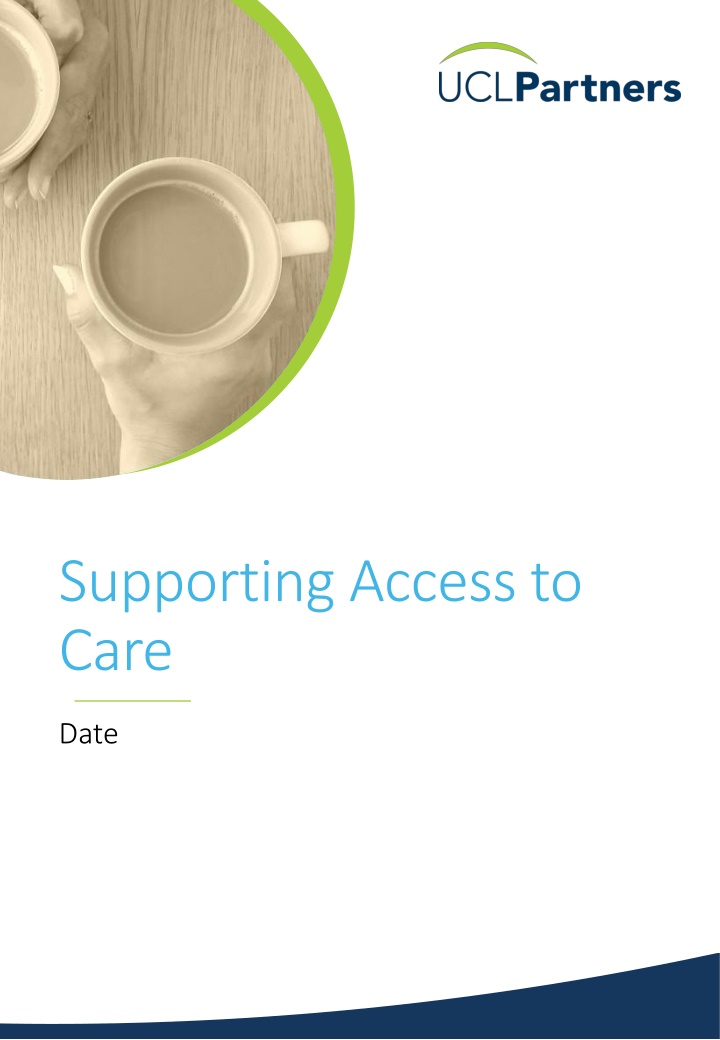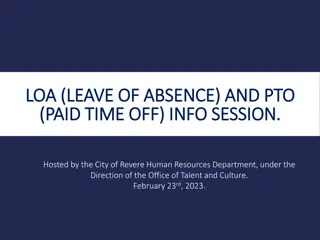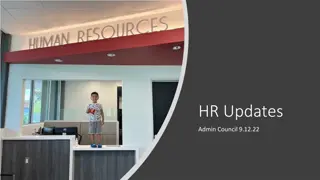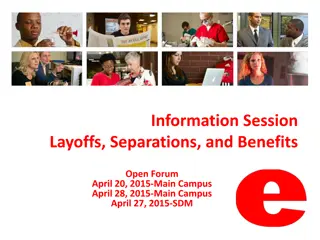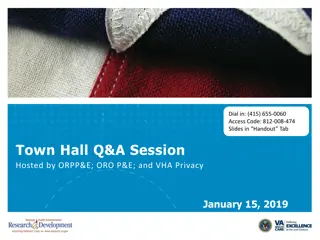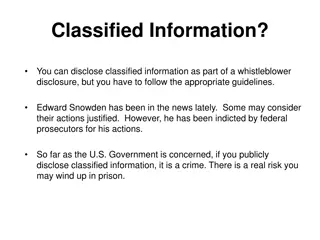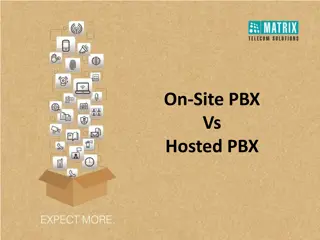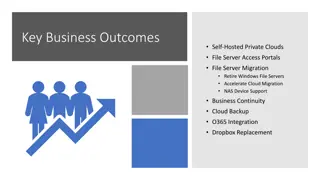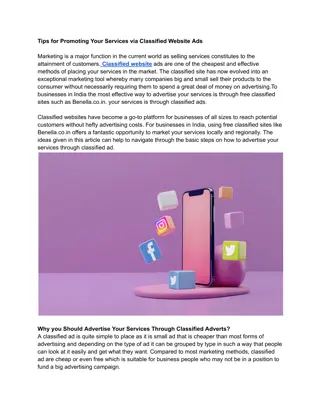Classified Layoff Information Session - Hosted by CSEA and CUSD
This session covers definitions, rights, and procedures related to layoffs. Topics include order of layoff, displacement rights, seniority, and reasons for layoffs. Employees entitled to 60 days notice and have the opportunity to ask questions regarding the layoff process.
Download Presentation

Please find below an Image/Link to download the presentation.
The content on the website is provided AS IS for your information and personal use only. It may not be sold, licensed, or shared on other websites without obtaining consent from the author.If you encounter any issues during the download, it is possible that the publisher has removed the file from their server.
You are allowed to download the files provided on this website for personal or commercial use, subject to the condition that they are used lawfully. All files are the property of their respective owners.
The content on the website is provided AS IS for your information and personal use only. It may not be sold, licensed, or shared on other websites without obtaining consent from the author.
E N D
Presentation Transcript
Supporting Access to Care Date
Breakout discussion 1 Breakout discussion 1 Buddy catch up Buddy catch up Share with your buddy What you want to get out of today s session Reflections on the last session Any action you ve taken to apply the thinking from the last session about supporting people through change After this discussion you will be asked to share your thoughts but you won t have to share the detail if you d rather not. 2
System overview System overview Source: Reimagining community services: making the most of our assets (The King s Fund ) 3
Primary / Secondary / Tertiary Care Primary / Secondary / Tertiary Care Source: https://contact.org.uk/advice-and-support/health-medical-information/health/an-introduction-to-the-nhs/ 4
Moving between services Moving between services 5
Transitions Transitions 6
Breakout discussion 2 Breakout discussion 2 - - The change cycle The change cycle What are your experiences of transitions through the system? Discuss your personal experiences and/or your experiences of supporting others through these transitions After this conversation will be asked to share only what you are comfortable to share about your own experiences. 7
Breakout discussion 3 Breakout discussion 3 Case study 1 part 1 Case study 1 part 1 Harjit was in a low secure forensic hospital, he had been an inpatient for 5 years. Sara, a peer support worker and new to the ward notices that Harjit is less chatty than some of the others on the ward, and has observed that he avoids eye contact with some of the staff, particularly the consultant. Sami, one of the ward nurses talks to Harjit and reminds him that his next six-month review with the ward consultant was in a weeks time. Following this conversation, Sara notices the Harjit s leg has become restless. She asks him if he s okay. Harjit explains that he is fine, he just doesn t like reviews. Sara asked what it was about them he didn t like. Harjit said, nothing changes, you go in and come out and that s it for another 6 months. Sara asked what Harjit what he would like to get out of the ward review. Harjit said I want to go home . Sara asked Harjit if he knew what it was that was stopping him from getting home leave. Harjit said that he was on the ward because he had physically attacked someone at a time when he was wasn t feeling himself. Because of this he wasn t allowed leave until he had completed a course on anger management. Sara asks Harjit more about the anger management course, and Harjit explains that he had tried it but found the it too distressing. He said it was based on a psychological model that deliberately provoked angry feelings inside of you. Harjit said that it wasn t a helpful way to help him process his emotional responses but because he refused to follow the course through until the end the ward refused to grant him any leave. Sara asked Harjit how long it had been since he had any leave. Harjit replied 2 years . Sara asked if Harjit would like her to be present at the ward review next week, Sara explained it was completely optional. Harjit agreed and said he would like her to be there. During the ward review Harjit explains, with Sara support, why he has been reluctant to engage with the anger management course. They agree with the consultant the Harjit can attend a different type of anger management course, and negotiate a trial period of leave. Over the next few weeks Harjit attends the anger management course and is allowed increasingly long periods of leave away from the ward. They begin to have discussions about when Harjit might be able to return to the community with the support of the adult mental health community team. Discuss Discuss As Harjit starts to prepare to leave the forensic hospital and return to the community, what sort of support do you think he might need from Sara? 8
Breakout discussion 4 Breakout discussion 4 Case study 1 part 2 Case study 1 part 2 A few months later, Harjit transferred to the Adult Mental Health community team to continue to receive support in the community. Phil a community peer support worker started working with Harjit. Phil was keen to try and help Harjit rebuild his life. They talked a lot about Harjit s experiences of being an inpatient on a Forensic ward. Harjit said he found it helpful to talk, he felt lighter. Harjit s mental health team felt he was ready to be discharged back to GP. This had been discussed with Harjit, but Harjit did not feel ready to be discharged. Phil felt that Harjit had come a long way but is unsure what might be holding him back from being ready to be discharged. Discuss Discuss What is the peer support role here with: community mental health team? supporting Harjit? 9
Breakout discussion 5 Breakout discussion 5 Case study 2 Case study 2 Josef was at college when he first started to hear voices. Frightened and scared Josef didn t tell anyone and started to isolate himself from family and friends. Josef lived with his parents who became concerned that Josef was pacing the house at night and shouting at people when the room was empty Josef s parents took him to A & E where Josef was seen by a mental health team. Josef was sectioned under the Mental Health Act. Josef s parents offered to take Josef in the car to the psychiatric hospital, but were told Josef had to travel by ambulance. They were not allowed to accompany him in the ambulance but were told they could meet him at the hospital. On the ward Josef kept himself to himself. There was one particular nurse he didn t get on with. One day whilst Josef walking down the ward he felt a hand grab him from behind. Alarmed, Josef turned and hit out. It turned out to be the nurse he didn t like. The nurse called for assistance and Josef was restrained on the floor and taken back to his room. A week later another incident happened between Josef and another patient on the ward. Josef was making himself a sandwich when he got into an argument with another person on the ward. Two days later Josef was seen by two people who said they were from the Forensic service. They informed Josef that he was being assessed to see if he needed specialist support from them. They asked him questions about his early years and life history. A week later Josef was informed by staff that he would be transferred to a low secure Forensic ward. Josef said he didn t want to go and that he was settled on the ward. Josef was taken to a low secure hospital in the next county. Josef noticed that the staff were very cold towards him. It was during Josef s first week that Fiona, the forensic peer support worker met with Josef. Discuss: Discuss: What is the peer support role here with Josef? the ward team? 10
NHS services overview NHS services overview 11
Health vs. social care Health vs. social care Source: https://www.mind.org.uk/information-support/legal-rights/health-and-social-care-rights/overview/ 12
Breakout discussion 6 Breakout discussion 6 Case study 3 Case study 3 Mel had anxiety and depression since she was 13 years old. She had been a CAMHS inpatient and also has been sectioned under the Mental Health Act. Faduma, her mental health practitioner, taught her to use CBT which helps with her anxiety and also when Mel s mood starts dipping. The CAMHS psychiatrist also prescribed medication that helped with her depression. Having stopped going to school completely for a while, she was happy to be able to go back and do her exams. Mel was doing really well and didn't need to see the CAMHS team anymore and due to her age was not now eligible, under the Trust s policy. Mel is now 18. A few months ago, she was offered a place at the local college. She was really excited but was also worried about starting somewhere new and not knowing anyone. Her anxiety got worse, and soon could not face the world. After a couple of weeks of not leaving the house, the depression came back. Her mum spoke to the GP and contacted adult mental health services. Someone from a 'crisis team' came to the house. Mel couldn't be bothered. She didn't want to talk to them. They had a few visits over the week, but it was a different person every time. They said they were not the right people to help as she was eating OK - and didn t seem to be at risk of any serious harm. Mel needed support from the adult mental health team longer term, but was struggling to get the help she needed, and as the crisis team were not helpful was very hesitant in asking. Her parents were also now concerned for Mel, but did not know what the next steps would be. Discuss: Discuss: If Mel had PSW what areas of support could be facilitated and how would you do this? What are the challenges around the transition in this case when Mel did not have a direct adult mental health care plan, or support in place when she was discharged from the CAMHS service? 13
Breakout discussion 7 Breakout discussion 7 Case study 4 Case study 4 Tony had been with CAMHS services for a number of years due to his mental health diagnosis of bipolar disorder. He also has an autoimmune condition which causes ongoing pain, contributing to his poor mental health. Over this time, he has been an CAMHS inpatient for 3 months and has received support in the community, with the CAMHS team. Tony was adopted, and experienced trauma with his birth parents, as well as significant disruption when moving between foster homes, and eventually into his permanent home with his adoptive parents. Throughout his childhood he is also experienced discrimination due to his dual heritage his birth parents were a white English mother, and a Jamaican father. His local Trust s policy was that CAMHS services stop at the age of 18 and now due to passing this age he was told that he would not be able to get support from the Team anymore and will be discharged to his GP . While Tony was actually doing well he didn t agree with the team s decision to be supported by just his GP, as he doesn t have a great relationship with them, and would have preferred to have support from the Adult Mental Health team as well. Tony had a care co-ordinator but again was within the CAMHS team and there was no real care plan developed. A deterioration in his physical care needs, in combination with his bipolar disorder, caused an urgent referral to the adult crisis team. As he had been just discharged from CAMHS there was some poor communication, and this was not helpful for Tony who did not want to engage with them. After this event a local voluntary service manged to get Tony some advocacy support to aid his transition to primary care, as the local NHS services has seemingly according to Tony washed their hand of him . Discuss Discuss How would you as a PSW support Tony? Are there any particular issues that a PSW should be aware of? Would the GP be the best support for Tony ? 14
Voluntary and Community Sector Voluntary and Community Sector 15
The role of voluntary and community sector organisations The role of voluntary and community sector organisations These kinds of services are normally free or low cost, and can offer a range of support, such as: However, they are not likely to: give a diagnosis provide medical services, such as psychiatry talking therapies peer support (support groups) prescribe medication. hearing voices groups advocacy arts therapies complementary and alternative therapies advice services online services, such as forums or live chat. 16
Breakout discussion 8 Breakout discussion 8 Voluntary and community sector Voluntary and community sector What community service/support have you found particularly valuable (for yourself or the people you support)? What made them useful? You will be asked to share your thoughts with the group. 17
Breakout discussion 9 Breakout discussion 9 Buddy catch up Buddy catch up Identify a situation in work where it might be helpful to support someone s journey through, or understanding of different types of service. How might you apply some of the learning from today? 18
